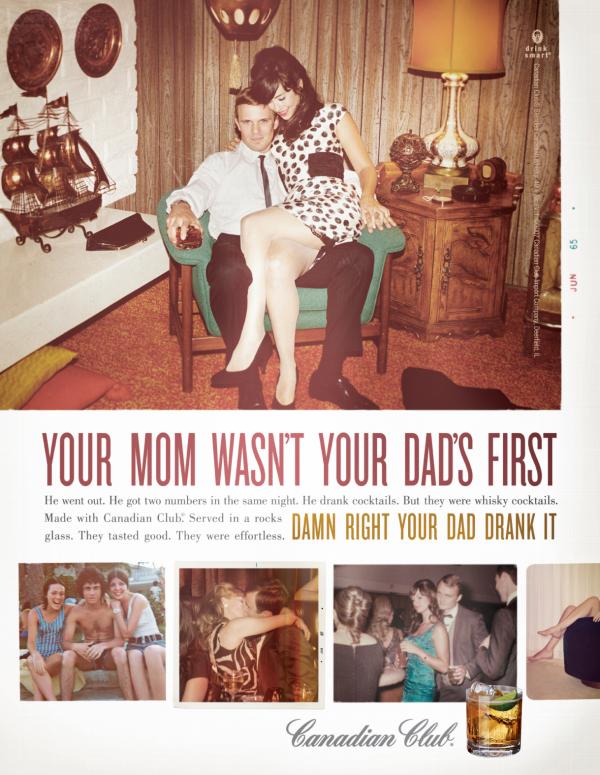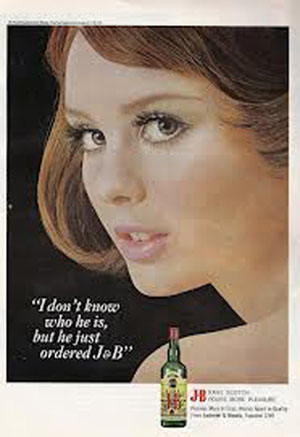
| The Preferred Unknown |

|
At first glance the eye popping words "Your Mom Wasn't Your Dad's First" immediately catch your eye. These words are an attempt to tug at your subjective thoughts and tap into your emotions. They suggest that your dad was a player and depending on what your gender identity is could give you a sense of pride or a feeling of disgust. These words hail you into believing that there is a side to your family's past that you do not know, it is synonymous to an average college student's life. Forcing you to open your mind to the possibilities of the unknown. The finer print reads, "He went out. He got two numbers in the same night. He drank cocktails. But they were whisky cocktails. Made with Canadian Club." Served in a rocks glass. They tasted good. They were effortless." Then in much bolder and colorful print the words and campaign slogan, "DAMN RIGHT YOUR DAD DRANK IT". There is a phallocentric nature around this phrase; all of these words are an attempt to embody masculine language. If you have a stereotypical working, dorky, and caring father you might be thinking, "what is this drink that could make my dad into this Casanova type person?" The answer is Canadian Club Whiskey. |

Hamamura, Takeshi. "A Cultural Psychological Analysis Of The Interplay Between Culture And Individuals." China Media Research 7.3 (2011): 1-10. Communication & Mass Media Complete. Web. 7 May 2013
Helford, Elyce Rae. "The Stepford Wives And The Gaze." Feminist Media Studies 6.2 (2006): 145-156. Communication & Mass Media Complete. Web. 7 May 2013
Johnson, Rebecca. "Law And The Leaky Woman: The Saloon, The Liquor License, And Narratives Of Containment." Continuum: Journal Of Media & Cultural Studies 19.2 (2005): 181-199. Communication & Mass Media Complete. Web. 7 May 2013
Kilbourne, William E., Scott Painton, and Danny Ridley. "The Effect Of Sexual Embedding On Responses To Magazine Advertisements." Journal Of Advertising 14.2 (1985): 48-56. Communication & Mass Media Complete. Web. 7 May 2013
Soukup, Charles. "Techno-Scopophilia: The Semiotics Of Technological Pleasure In Film." Critical Studies In Media Communication 26.1 2009): 19-35. Communication & Mass Media Complete. Web. 7 May 2013